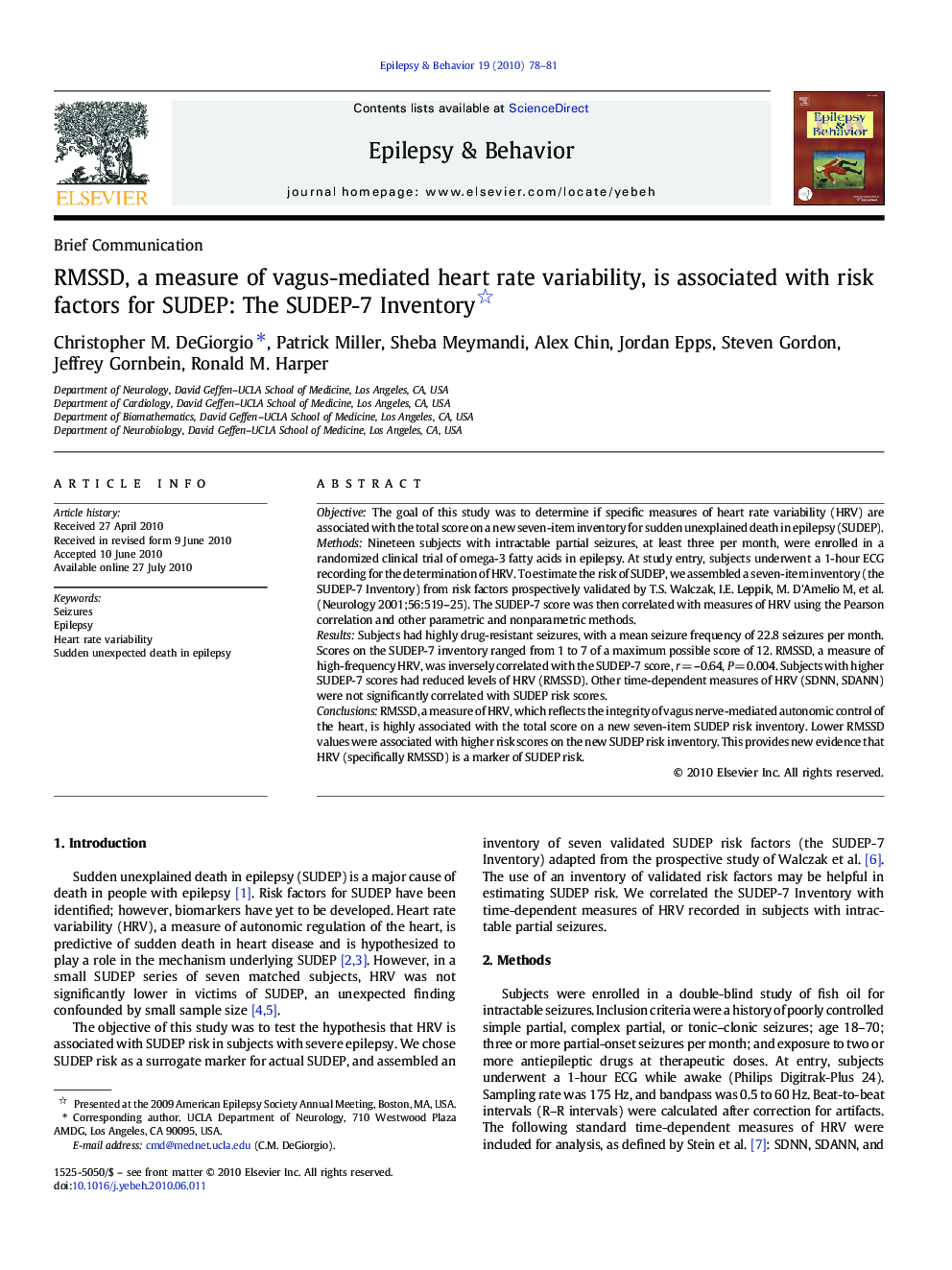| Article ID | Journal | Published Year | Pages | File Type |
|---|---|---|---|---|
| 3050014 | Epilepsy & Behavior | 2010 | 4 Pages |
ObjectiveThe goal of this study was to determine if specific measures of heart rate variability (HRV) are associated with the total score on a new seven-item inventory for sudden unexplained death in epilepsy (SUDEP).MethodsNineteen subjects with intractable partial seizures, at least three per month, were enrolled in a randomized clinical trial of omega-3 fatty acids in epilepsy. At study entry, subjects underwent a 1-hour ECG recording for the determination of HRV. To estimate the risk of SUDEP, we assembled a seven-item inventory (the SUDEP-7 Inventory) from risk factors prospectively validated by T.S. Walczak, I.E. Leppik, M. D'Amelio M, et al. (Neurology 2001;56:519–25). The SUDEP-7 score was then correlated with measures of HRV using the Pearson correlation and other parametric and nonparametric methods.ResultsSubjects had highly drug-resistant seizures, with a mean seizure frequency of 22.8 seizures per month. Scores on the SUDEP-7 inventory ranged from 1 to 7 of a maximum possible score of 12. RMSSD, a measure of high-frequency HRV, was inversely correlated with the SUDEP-7 score, r = –0.64, P = 0.004. Subjects with higher SUDEP-7 scores had reduced levels of HRV (RMSSD). Other time-dependent measures of HRV (SDNN, SDANN) were not significantly correlated with SUDEP risk scores.ConclusionsRMSSD, a measure of HRV, which reflects the integrity of vagus nerve-mediated autonomic control of the heart, is highly associated with the total score on a new seven-item SUDEP risk inventory. Lower RMSSD values were associated with higher risk scores on the new SUDEP risk inventory. This provides new evidence that HRV (specifically RMSSD) is a marker of SUDEP risk.
